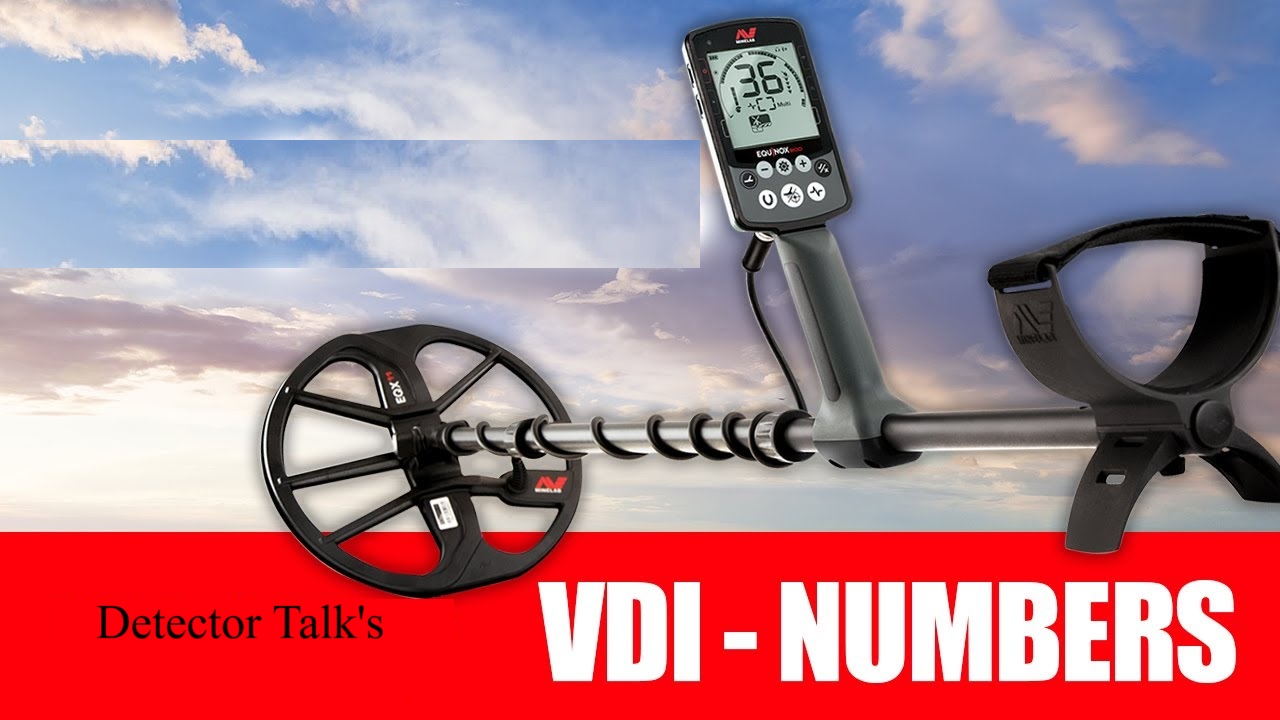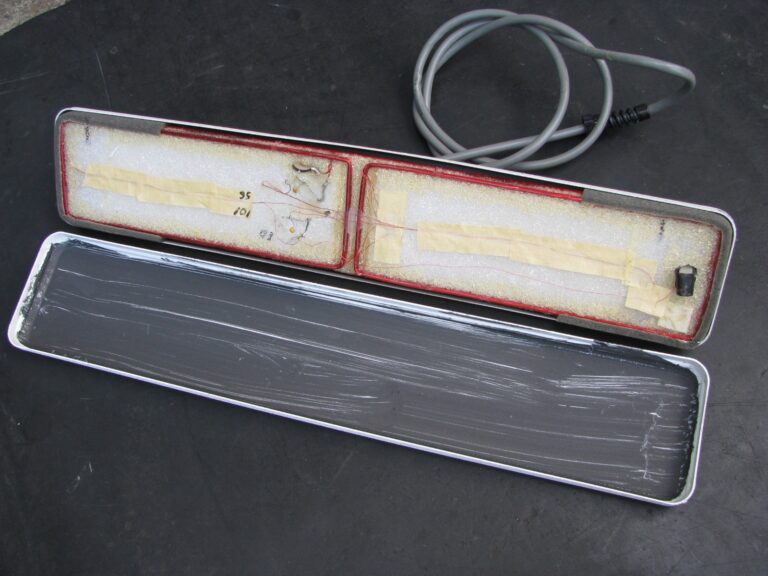Metal Detector Number Chart
There is no definitive answer to this question, as the ideal metal detector number will vary depending on factors such as the type of metal you are looking for, the ground conditions where you are searching, and your personal preferences. Let’s go more deeply on Metal Detector Number Chart.
However, a good place to start is with a metal detector with an adjustable frequency to experiment with different settings to find what works best in your situation.
When finding the best metal detector for your needs, it is important to consider a few different factors. One of the most important things to consider is the type of metal you seek. Detectors are specifically designed to find coins, jewellery, and even gold nuggets.
Another factor to consider is the size and weight of the device. You will want a lighter-weight model if you use your metal detector in rough terrain or for long periods. Finally, consider how much you will spend on a metal detector.
They range in price from around $50 to over $1000. Once you have considered these factors, you can narrow down your choices by looking at specific models. To help with this process, we have created a metal detector number chart that includes some top-rated models today.
This chart includes each model’s features, price range, and more. Considering all these factors, you can find the perfect metal detector for your needs!

What Do Numbers on Metal Detector Mean?
If you’ve ever used a metal detector, you know it gives off different beeps and vibrations when it comes into contact with metal. But have you ever wondered what those numbers mean? Here’s a quick guide to help you understand:
The first number is the setting that corresponds to the type of metal you’re trying to find. For example, if you’re looking for gold, you would use a higher setting than if you were looking for iron. The second number is the discrimination setting, which helps the metal detector ignore certain types of metals.
For example, if you’re only interested in finding gold coins, you would set the discrimination to filter out everything except gold. The third number is the sensitivity setting, which determines how sensitive the metal detector is to metals. The higher the sensitivity, the more likely it is to detect even small pieces of metal.
However, this also means that false positives are more likely, so finding a balance for your needs is important.
What Frequency is Gold on a Metal Detector?
Gold is one of the most popular metals to search for with a metal detector. But what frequency is gold on a metal detector? The answer may surprise you – gold can be found on any frequency!
That’s because gold is a conductive metal that will respond to all frequencies. However, some frequencies are better than others when finding gold. Here are some tips on what frequency to use for gold prospecting:
- Start with a lower frequency if you are new to detecting. Lower frequencies have less “background noise” and will help you get accustomed to using your machine.
- As you become more experienced, move up to higher frequencies. Higher frequencies will give you more detection depth and help discriminate between different types of metals.
- If you are searching in an area with a lot of trash or iron (like an old homestead), use a higher frequency machine, as these tend to do better in these conditions.
- Some people believe using a multi-frequency machine is best for finding gold, allowing you to switch frequencies and find the sweet spot for each site. However, multi-frequency machines can be more expensive and unnecessary if you are starting.
What are Tr1 And Tr2 on Metal Detector?
TR1 and TR2 are two of the three search coils that come with the Garrett Ace Metal Detector. The TR1 is smaller at 8″ in diameter, while the TR2 is larger at 11″ in diameter. Both coils will similarly detect metals, but the larger coil will cover more ground in a shorter time.
What are VDI Numbers for Metal Detecting?
When it comes to metal detecting, one of the most important things you need to know is what the VDI numbers mean. These numbers will help you determine what type of metal you have found and how valuable it may be. Here is a breakdown of what the VDI numbers mean:
- 0-50: This range generally indicates ferrous or magnetic materials such as iron, steel, or nickel. 51-100: In this range, you will typically find aluminium foil, copper wire, or brass objects.
- 101-200: If your detector reads in this range, you have likely found zinc pennies, stainless steel objects, or lead shots.
- 201-300: Objects with a VDI reading in this range are usually made of silver or gold. However, readings in this range can also be caused by tinfoil balls or other trash items.
- 301-400: This is the highest range on most detectors and usually indicates that you have found a large chunk of metal, such as an automobile engine block.
However, readings in this range can also be caused by mineralized ground conditions.
What Number is Gold on a Metal Detector
Gold is a valuable metal, so it’s unsurprising that people want to know the number of gold on a metal detector. Unfortunately, there is no simple answer to this question. Metal detectors work by detecting the presence of metals in the ground, and each machine is different.
Some machines may be able to detect gold, while others may not. The only way to know is to experiment with your machine.
Here are a few things that you can keep in mind when trying to detect gold with a metal detector:
- Look for areas where there are known gold deposits. This will increase your chances of finding some gold nuggets.
- Pay attention to the readout on your metal detector. If it starts beeping or showing a high number, there’s a good chance that gold is nearby.
- Experiment with different settings on your machine until you find one that best detects gold nuggets.
What Do the Numbers on a Metal Detector Mean
If you’ve ever wondered what those numbers on a metal detector mean, wonder no more! Here is a breakdown of what each number signifies: The first number indicates the frequency at which the device operates.
The second number tells you the penetration depth, and the third reveals how much target response you can expect. Here’s a more detailed explanation of each: Frequency: This is measured in kilohertz (kHz) and refers to how often the pulses are sent out per second.
Higher frequencies are better for finding small objects like coins, while lower frequencies are better for finding larger items like jewellery. Depth Penetration: Measured in centimetres (cm), this number tells you how deep underground the metal detector can detect an object. Target Response: This is indicated by a scale of 1-10, with 10 being best.
It means how well the device can identify what kind of metal it has found. Remember these three numbers next time you’re using a metal detector, and you’ll be sure to find whatever you’re looking for!
Minelab Vanquish 440 Target Id Numbers
What are Target ID Numbers? Minelab’s Vanquish 440 metal detector uses Target ID numbers to help identify the type of metal an object is made of. The numbers range from 0 to 99, with lower numbers indicating more conductive metals like iron and copper, while higher numbers indicate less conductive metals like gold and silver.
How do they work? When the Vanquish 440’s coil passes over a piece of metal, it emits a signal that is analyzed by the detector’s computer. This information is then used to generate a target ID number that appears on the screen.
Why are they useful? Target ID numbers can be very helpful when determining what kind of metal an object is made of, especially if it’s buried under several inches of dirt or sand. They can also help you discriminate between different types of trash and valuable metals, saving you much time and effort in the field.
Minelab Target Id Numbers
Minelab Target Id Numbers are used to help the user identify a target. The numbers range from 0 to 99, with the higher numbers representing more conductive targets. Each number represents a different level of conductivity, which can help determine what kind of metal you have found.
Here is a breakdown of what each number means: 0-9 are the least conductive targets, generally iron or steel. 10-19: These targets are slightly more conductive and may be aluminium, brass, or bronze.
20-29: These targets are even more conductive and may be copper or lead. 30-39: These targets are among the most conductive and may be silver or gold. 40-99: These targets are the most conductive, usually nickel, stainless steel, or tungsten.
Conclusion
When it comes to metal detectors, many numbers are involved. Each number provides crucial information about the machine, from the frequency to the depth. But what do all these numbers mean?
This helpful chart breaks down the most important metal detector numbers so you can understand what you’re looking for when shopping for a new machine. The first number to consider is the frequency. The frequency is measured in kilohertz (kHz), and it tells you how often the metal detector’s coil passes over a particular spot of ground.
A higher frequency means more sensitivity to smaller pieces of metal, while a lower frequency is better for larger pieces. The second number is the depth indicator or maximum depth range. This number tells you how deep the metal detector can penetrate the ground.
It’s important to note that this number is only sometimes accurate, as soil conditions can impact how deep the detector can go. Finally, there’s the target ID or discrimination scale. This number measures how well the metal detector can distinguish between different types of metals.
A higher number means better discrimination and fewer false positives from junk metals like aluminium foil or pull tabs from soda cans.







